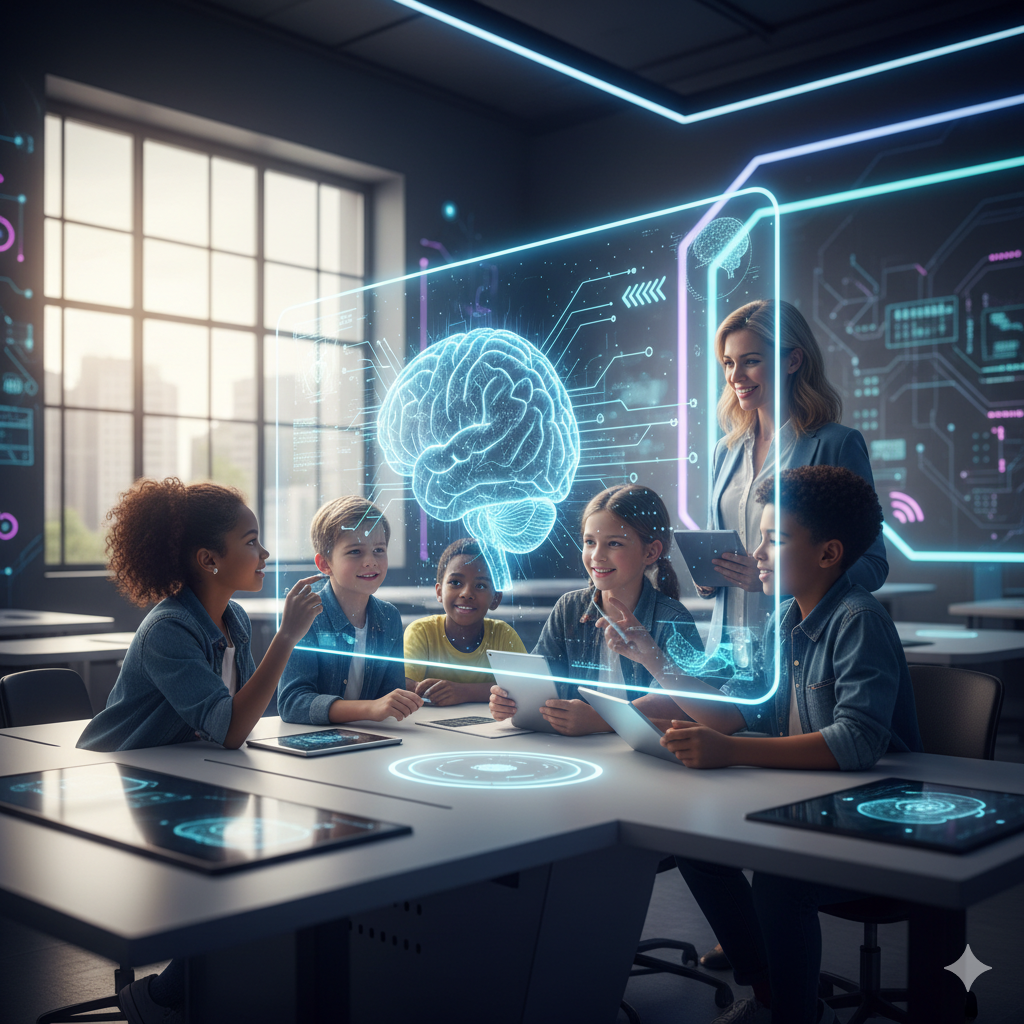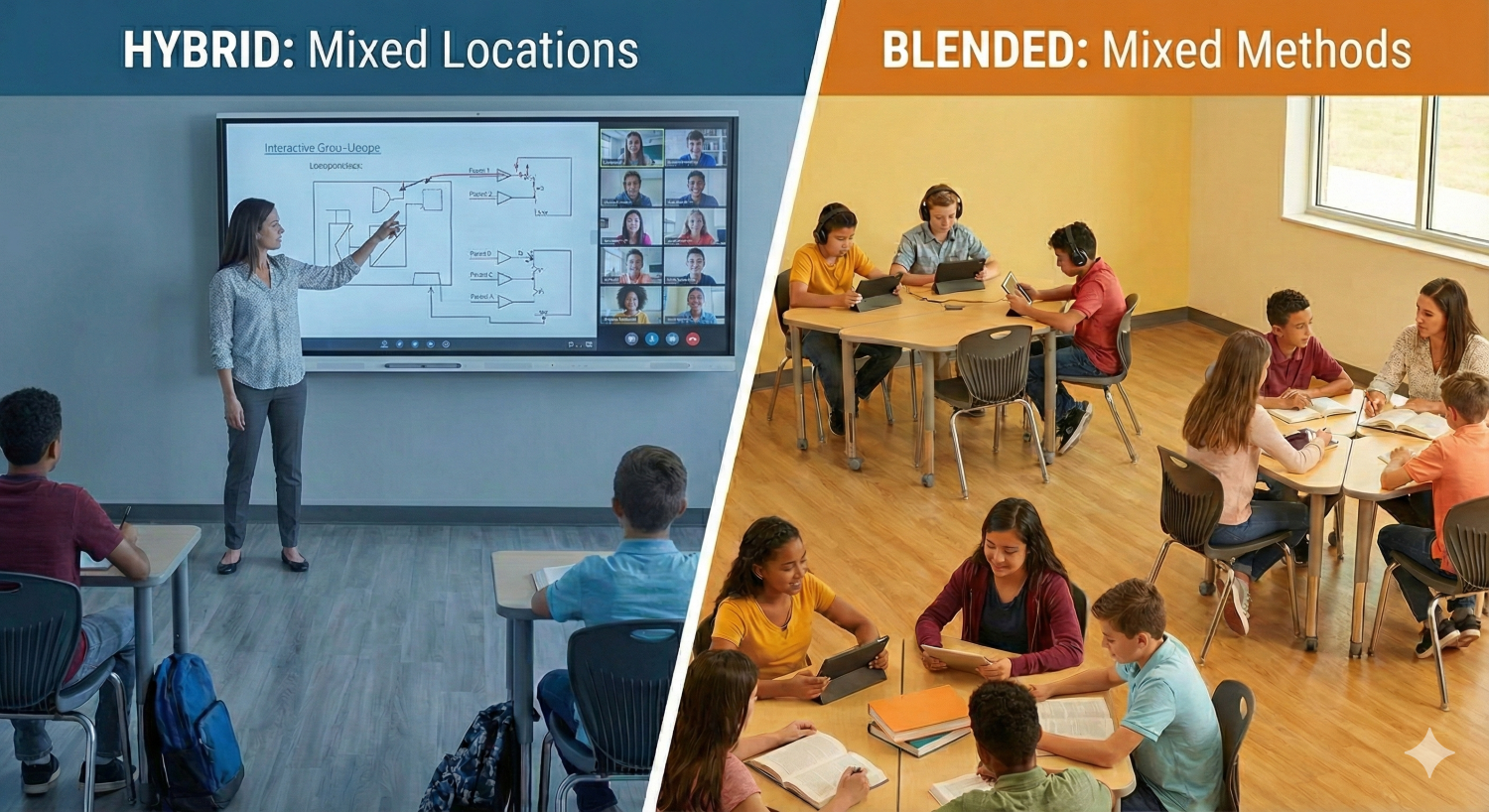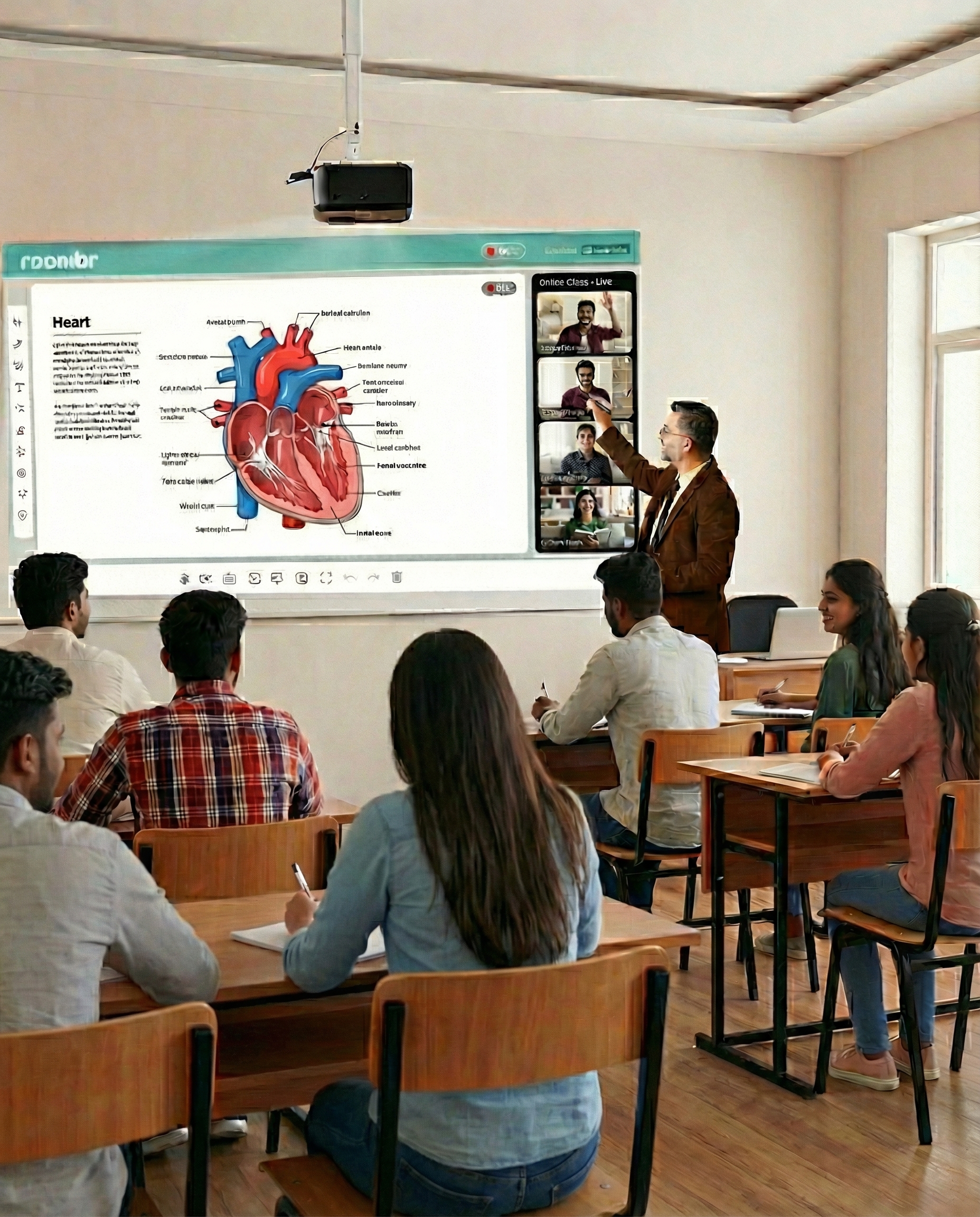The Digital Classroom: How to Prepare Students for a Digital-First World

The world our students are preparing for looks nothing like the one we grew up in. Today’s learners will graduate into a workforce driven by AI, automation, and a pace of change that's overwhelming. They'll have jobs we haven't even imagined yet, using tools that are being invented as we speak.
This era is called the "digital-first world." It's not mere industry jargon. It's the simple reality that most communication, commerce, and creation now happen through a screen. Thus, the question that an educator may ask is, "Are our classrooms giving students the skills to lead in that world, or just to get by?"
For too long, we’ve seen technology in education as an add-on—a fancy whiteboard here, a computer lab there. But that’s not enough anymore. We need to build a bridge between the way we teach and the way the world works. That bridge, when built correctly, is the modern digital classroom. It’s not about replacing great teachers. It’s about giving them the right tools to prepare students for a fundamentally different future.
What Does a Digital-First World Mean for Education?
Think about any career path today. A marketing manager relies on data analytics, a mechanical engineer uses cloud-based CAD software to collaborate with teams across continents, and even a local retailer needs to master digital payments and online inventory. Digital fluency isn't a separate subject. It's the language of modern work.
The skills that matter now are not about memorizing facts. Google can do that. The valuable skills are uniquely human: critical thinking, creative problem-solving, and the ability to collaborate effectively with others, whether they’re in the same room or on the other side of the world.
This isn't just an observation but a national priority. The National Education Policy (NEP) 2020 is a direct response to this global shift. It explicitly calls for integrating technology at every level of learning to foster these very skills. The message is clear: Indian education must adapt, and it must adapt now.
The Role of the Digital Classroom in Student Preparation
So, what does a real digital classroom look like in action? Forget the image of students silently staring at individual screens. That's not it. A truly effective, high tech classroom is a dynamic and interactive place. It's an environment built for engagement.
It fundamentally changes the role of the student from a passive listener to an active participant. This happens through specific features of a smart classroom that are designed to build future-ready skills, not just deliver content.
- It’s a collaborative space: An interactive display isn't just a fancier blackboard. It's a shared digital canvas where a group of students can work through a complex physics problem together, with each contributing to the solution in real-time. That’s teamwork.
- It breaks down walls: With the ability to record lessons, a student struggling with a calculus concept can re-watch the explanation as many times as they need to at home. That's personalised learning. A teacher can bring in a guest speaker from another country via video link. That’s global exposure.
- It’s flexible: Great teachers know that not all students learn the same way. A digital classroom allows them to blend different methods effortlessly. They can give a short lecture, then break students into digital groups for a research task, and finish with an interactive quiz—all within the same period.
This approach looks very different depending on the age of the student, but the core philosophy remains the same: use technology to unlock human potential.
Preparing K–12 Students for a Digital-First Future
For young learners, technology should be about exploration and wonder. The goal is to build confidence and curiosity, not to train them to be tiny office workers.
Picture a fifth-grade classroom learning about the solar system. In a traditional setup, they’d look at pictures in a textbook. In a digital classroom, they can take a 3D virtual tour of the Mars Rover, flying over craters and seeing the planet up close on a large interactive screen. Which experience do you think will stick with them?
This is where we lay the groundwork. Smart classroom solutions help make abstract ideas concrete. Complex STEM topics become interactive puzzles. History isn't just dates and names. It's a collection of stories they can explore through videos and virtual museum tours. By making technology a natural part of learning from a young age, we teach students to see it as a powerful tool for creation and discovery. We're not just teaching them what to learn but how to learn in a world overflowing with information.
Preparing Higher Education Students for a Digital-First Future

When students enter college or university, the stakes get higher. This is about employability. Institutions are now judged by their ability to produce graduates who can walk into a modern workplace and contribute from day one.
A high tech digital classroom in higher education should be a direct simulation of the professional world. It's where theory meets practice.
- Engineering students can collaborate on designs using industry-standard software in virtual labs.
- Business students can analyse real-time market data and present their findings on a shared digital whiteboard, just as they would in a corporate boardroom.
- Medical students can study complex anatomical models in 3D, gaining a level of understanding that flat diagrams could never provide.
Hiring managers today are looking for more than just a degree. They're looking for proof of practical skills: experience with collaborative platforms, an understanding of data, and the ability to communicate ideas clearly in a digital format. The university that provides this environment is the one that gives its students a tangible competitive edge in the job market.
Challenges in Transitioning to a Digital Classroom
Every school administrator and trustee we speak with brings up the same valid concerns. This kind of transformation isn't easy, and pretending it is would be a disservice.
The biggest hurdles are almost always cost, training, and the fear of getting it wrong. The initial investment can feel significant. And what's the point of having a high tech classroom if the teachers aren't confident using the tools? Then there's the very real concern about screen time and making sure we don't lose the essential element of human connection.
These are not roadblocks. They are signposts that demand a smart strategy. The answer isn't to do everything at once. It's to start with a clear plan. Begin with a pilot program in a few key classrooms. Focus on providing teachers with incredible, ongoing training and support—not just a one-day workshop. And choose technology that is intuitive and easy to use, so the focus stays on the teaching, not the troubleshooting.
Building a Future-Ready Learning Ecosystem
Here’s the most important piece of advice digital classroom experts offer: stop thinking about buying gadgets. Start thinking about building a system.
A classroom with a jumble of disconnected tools—a smart board from one company, a conferencing camera from another, all running on different software—creates more problems than it solves. It leads to technical frustrations for teachers and a disjointed experience for students.
The real magic happens when all the components work together effortlessly. You need a true learning ecosystem. This is why all-in-one smart classroom solutions are becoming the standard for forward-thinking institutions. Platforms like Roombr integrate the interactive display, the computer, the cameras, the microphones, and the software into a single, cohesive unit. This approach removes the technical friction and lowers the barrier to entry, allowing teachers to walk in and simply start teaching. It creates a reliable, immersive environment where technology becomes invisible, and learning takes centre stage.
Key Takeaways for Schools and Colleges
The path forward requires a shift in mindset more than anything else.
- It’s an investment, not an expense. A digital classroom is a direct investment in the future relevance of your institution and the success of your students.
- Teacher empowerment is everything. The best technology is useless without confident, well-trained teachers. Put their professional development at the heart of your strategy.
- Start now, but think long-term. You don't have to be perfect from day one. But you do have to start. Your students' futures depend on it.
Frequently Asked Questions
1. What skills do students really need in a digital-first world?
Beyond basic computer skills, they need what are often called "21st-century skills": the ability to think critically about information they find online, to solve complex problems that don't have easy answers, to communicate their ideas clearly, and to work collaboratively with diverse teams.
2. How does a digital classroom actually improve student engagement?
It puts them in the driver's seat. Instead of just listening, they are doing, creating, and collaborating. When learning is interactive and relevant to their world, their natural curiosity kicks in. Engagement happens naturally.
3. Are digital classrooms really necessary for both schools and colleges?
Yes, but for different reasons. In school, it's about building a strong foundation of digital literacy and a love of learning. In college, it's about refining those skills for a specific career path and ensuring graduates are truly job-ready. The two stages are deeply connected.
4. What features should an ideal smart classroom include?
Look for an integrated system, not a collection of parts. The essentials are: a large, high-definition interactive display; a powerful, built-in computer; a quality camera and microphone system for hybrid learning; and software that is simple for teachers to use for everything from lesson planning to recording and sharing content.
Learn more about our digital classroom technology that powers future-ready schools, colleges, and universities.
Foziya Abuwala
Share
Step Into the future of
Education with Roombr

















